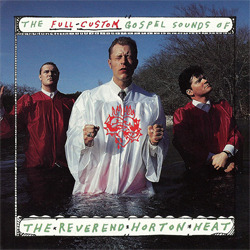Bill Lindsey has a post up on his blog now in memory of his
brother, who died in 1991. The post starts with a poem, which Bill wrote in
honor of a priest and friend. “In my heart I’ve carved a shrine,” he writes,
“where red carnations vie with daffodils / to chant you to your rest.” But
despite the speaker’s attempts to remember, the poem concludes: “That shrine
within my heart / holds one bloom fewer every day.” Below his poem, Bill
emphasizes the importance of remembrance in the face of this need to move on,
and both his poem and his comments stand as a type of resistance to this human
tendency to let go.
My mom died six years ago today. Like Bill, I’ve been
wrestling with questions of how to remember a person, too— and not just because
of the impending anniversary, but because my stepfather is moving to a new,
smaller house, and so he’s having to go through boxes of mom’s stuff to decide
what to keep, what to send to me, what to sell, and what to get rid of. We’ve
been able to put off these decisions for a long time, but now the deal is this:
we’ve got to get rid of stuff.
So I’ve been getting texts with pictures of things—a framed
print that hung on the dining room wall of our house in Charleston; a paper
towel rack that mom made when she went through her carpentry phase while living
in Spain. These things are coming from storage, from deep in the attic. Lots of
them I haven’t seen since I was eleven or twelve. My mom felt no need to have
them out in her big house in Tulsa. But shouldn’t they be more important to me?
I mean, yes, that paper towel holder is kind of ugly. But mom made it. And no,
we don’t have room for that print in our house, and even mom didn’t have it on
her walls for the last twenty years of her life. But it’s something she chose,
when she was about my age, because it fit her style in a certain moment of her
life. Doesn’t that moment deserve to be remembered?
Every time my stepdad asks me if I want to keep something,
and I tell him no, I feel like I’m willfully dropping a petal of mom’s memory.
I tell myself I’ve got enough to remember her already: albums and albums of
photos, her doctoral diploma, her copy of the Book of Common Prayer. And I tell myself that she wouldn’t care.
And she wouldn’t: when I look around my house, I know I wouldn’t want anyone to
keep everything hanging on my walls in memory of me. And then there’s the bare
reality that a framed print is not a flower petal—it’s a big, bulky thing that
has to be housed somewhere, and I just don’t have any space right now.
But Bill’s post was helpful, too, in highlighting the
importance of words, actions, and rituals for remembrance. It was two years ago
today that I started going to church again semi-regularly—to my church, the
church in which mom raised me—and it was because I had been flipping through
that Book of Common Prayer, and
reading the words, and I suddenly had a strong urge to hear those words and,
more, to participate in those words. I had an urge for communion.
And I went to church, and I found it. And I still find it
there, most of all in the words. Even last Sunday, six years removed from mom’s
passing, kneeling and saying the Prayer of Humble Access brought us together.
The “we” of the first line was for me not just the congregation present but the
“we” of my mother and me at Christ Church in Mount Pleasant, at St.
Andrew’s in Fort Worth, at St. Anne’s in Atlanta.
So, as important as that passed-down copy of the BCP, the physical thing, is to me, it means much less to me than
the words it contains. Because we remember each other not with things, but with
words.
And, as much as I write this blog for others, to advocate
and persuade, I also write it for myself, to remember: little things, like the
article that captured my attention last Tuesday, and big things, like what it’s
like to be married to H this year, what it’s like to have a four-year-old
daughter. And my mom.
Here are a few posts where she’s showed up, from both here
and the other places I write. I’m posting them again, just for remembrance’s sake:
Penelope Casas, 1943 - 2013 (pterodáctilo, August 23, 2013)
Of Manly Tables and Girly Drinks (letters to the catholic right, May 4, 2014)
This University of Alabama Sorority Thing (letters to the catholic right, September 17, 2013)
This University of Alabama Sorority Thing (letters to the catholic right, September 17, 2013)
Three Essays on Ideal Families (letters to the catholic right, August 10, 2013)
From the Gulf (July 31, 2013)














